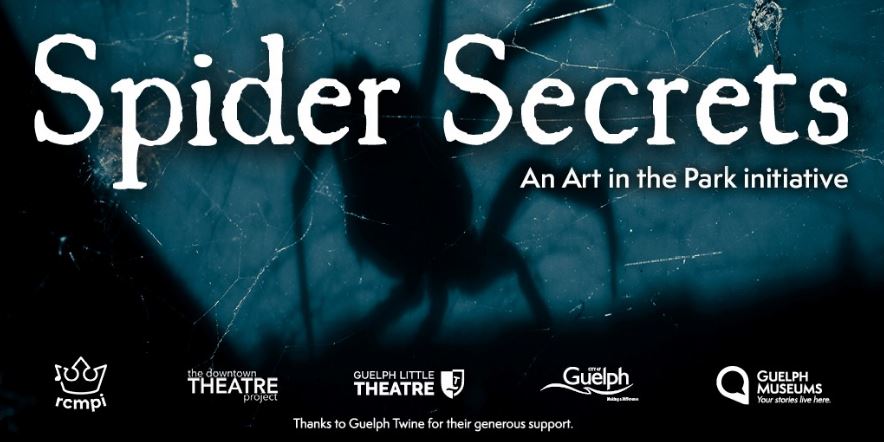
As part of a new Art in the Park initiative, we bring you larger-than-life, spider scenes created by local theatre companies at the south-end at Exhibition Park. The Downtown Theatre Project, Royal City Musical Productions Inc., and Guelph Little Theatre have teamed up with the City of Guelph to animate this section of trail in the popular park with scenes featuring giant spiders doing regular, every-day tasks in massive webs.
The aim of the installation, besides giving theatre professionals a chance to engage with the community after months of dark stages due to COVID-19, is to appreciate and highlight nature through art. Spiders are pretty cool actually! See photos and facts below.
The City’s Culture Department works to creatively enliven public space and broaden the community’s experience of the arts through temporary installations like these. Thanks go out to the dedicated and resourceful team of volunteers who pulled the project together, and to Guelph Museums for its support!
- Concept by Paul Barson and Barb Bryce
- Produced by Paul Barson and Jen Barson
- Spider research and scenes designed by Barb Bryce
- Giant spider designed and built by Jason Clattenburg
- Spider props created by Deborah Neve
- Rigging by Bruce Bennett and Jacob Thompson-Patterson
- Lighting by Jacob Thompson-Patterson
- Web Spinners: Paul Barson, Trevor Smith Diggins, Carmenta Diggins, Judith Eden, Luisa Lago, Janella Lale, Scott Lale, Beth Sheppard, Matt Steffler, Philip Sullivan
- Install crew: Paul Barson, Bruce Bennett, Barb Bryce, Jason Clattenburg, Trevor Smith Diggins, Gary Misner, Mackenzie Misner, Janet Mosney, Deborah Neve, Philip Sullivan, Jacob Thompson-Patterson
- Sign/graphic design: Gareth Lind, Lind Design
Check out the Spider Secrets map!
Entrance
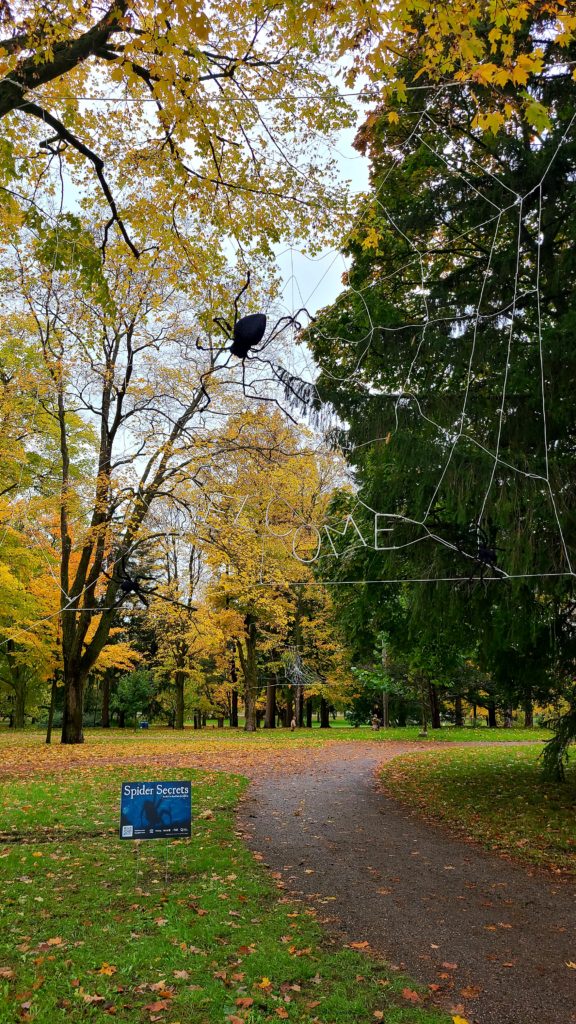
Entrance – Welcome
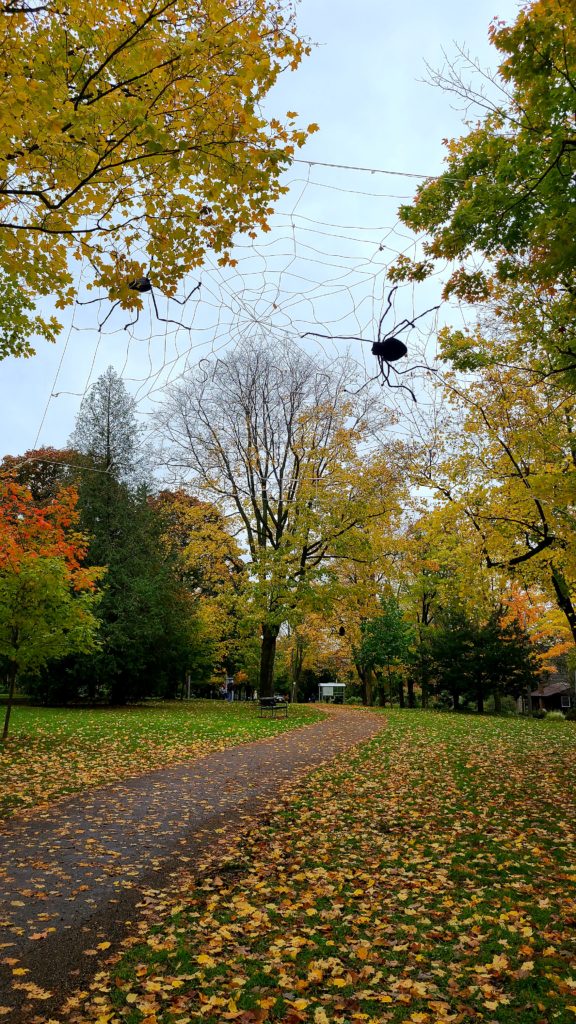
Entrance – Spider Secrets
Location 1: Spider Music
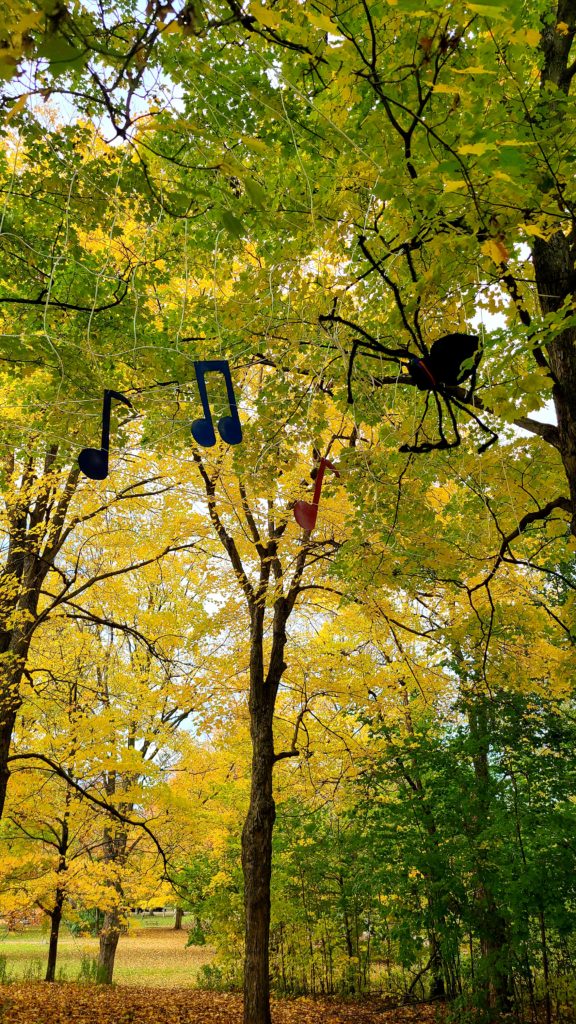
Location 1
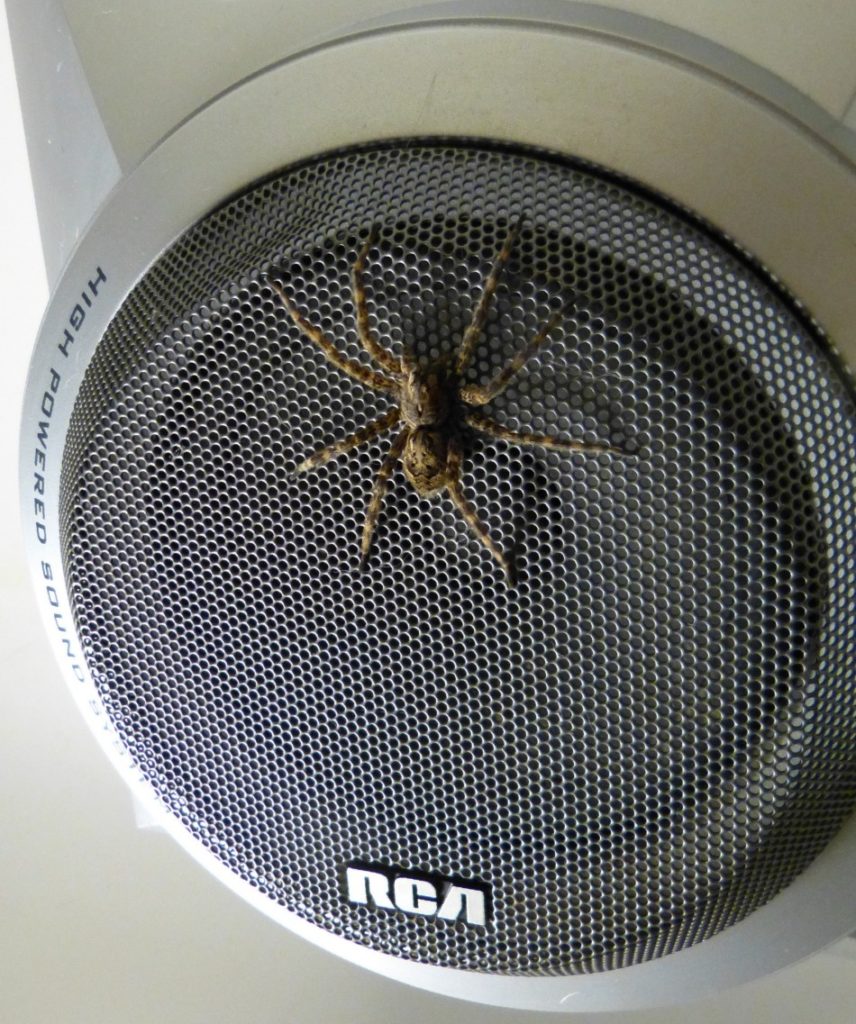
Speaker spider, by Tammy Mackenzie
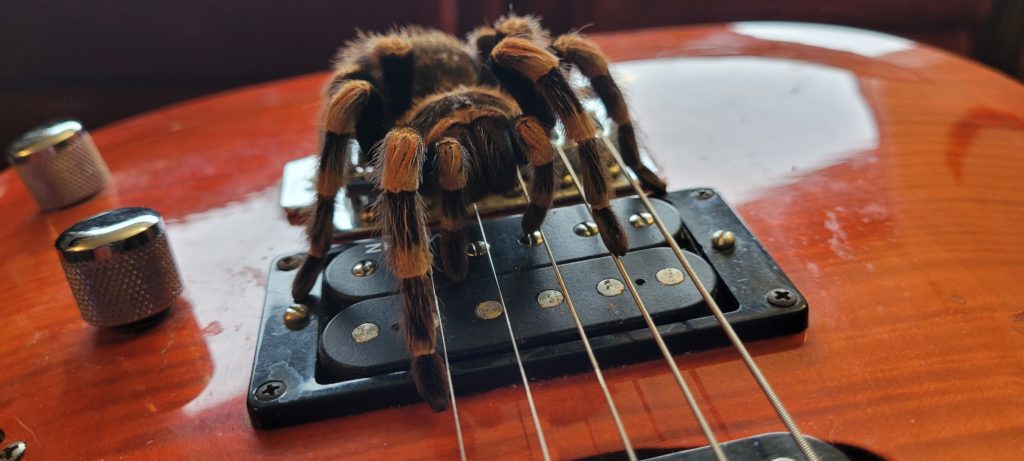
Spider on Guitar, by Marie-Pier Naud
Fact: Spiders have a finely tuned sensitivity to vibrations. They sense sound through hairs and tiny slits distributed over much of their body. They like classical music! (according to research at Miami University.) One study found that when listening to techno and rap, the spiders made their webs as far away from the speaker as possible. When Bach was played, they made their webs as near to the speaker as possible.
And, do they dance? Well, the male Peacock spider likes to dance for his mate!
Location 2: Spider Momma

Location 2
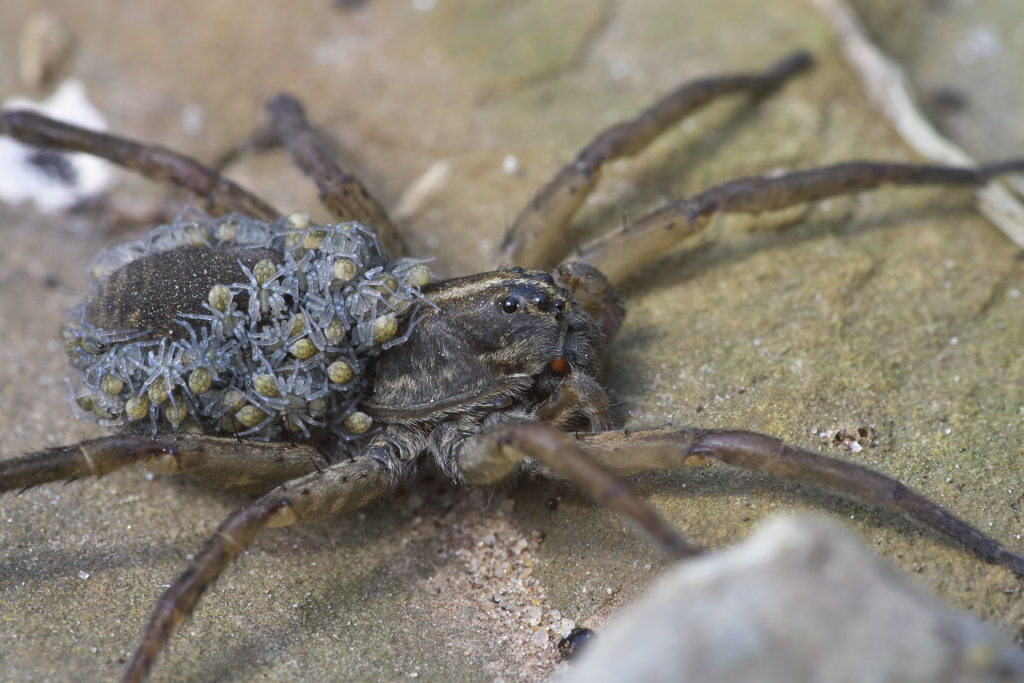
Wolf spider, by John Reaume
Fact: Mother Wolf spiders carry their egg sacs around so they can hunt and still be present when their spiderlings hatch. Their mother helps them out of the egg sac and piggy-backs them around with her. Some spiders lay up to 3000 eggs and some baby spiders end up eating their mothers after they hatch!
Location 3: Fishing Spider

Location 3

Dark Fishing Spider, by John Reaume
Fact: Fishing Spiders, also called Dock or Wharf Spiders, like to live near water. They can be found near lakes, ponds, marshes, streams, and in the woods. They are big, with up to a 3 inch leg span! Dock spiders can feed on prey almost five times their size! Their meals include aquatic insects, minnows, tadpoles, frogs, and even small fish. These spiders can also trap and hold air bubbles in the hairs under their bodies so they can stay under water for up to 30 minutes. Or if they like, they could just skim over the surface of the water as if they were skating.
Location 4: Dangling Spider
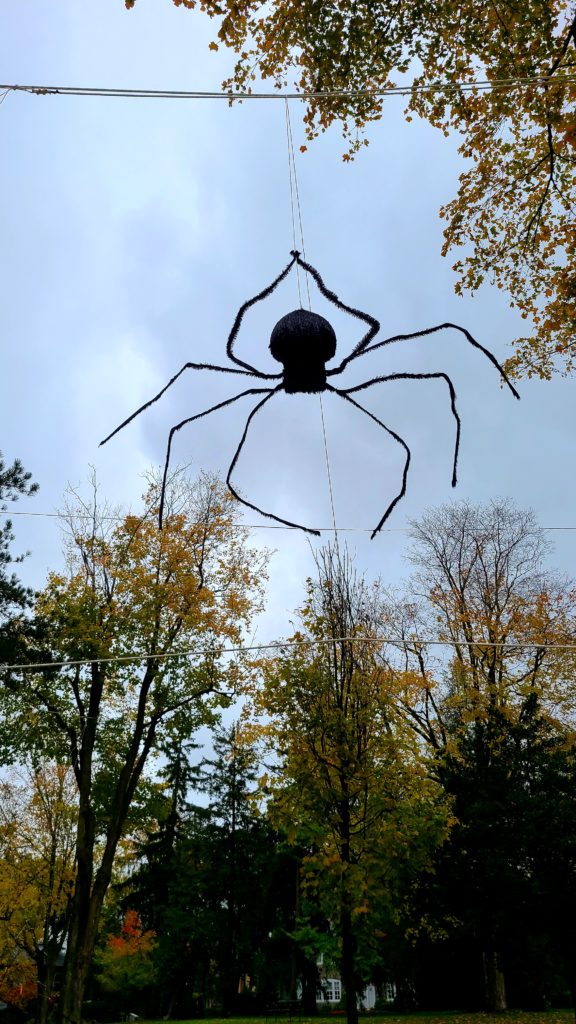
Location 4
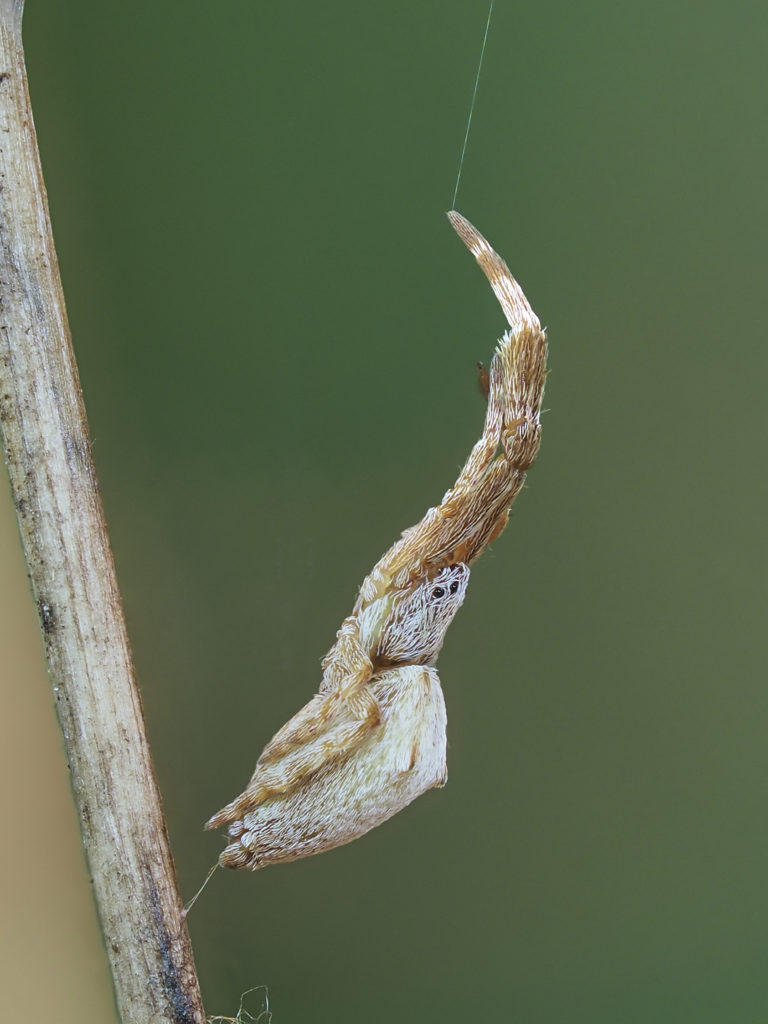
Featherlegged Orb Weaver, by John Reaume
Fact: Seeing a spider hanging from a single strand of silk is good luck in some cultures. It represents joy, creativity and wealth coming from heaven!
Rigid spider silk could be stronger than Kevlar and stronger than steel by diameter. It’s so strong and flexible it can be formed into a net that would stop a bullet! Making artificial spider silk is super complicated and a lot of research is being done to do figure it out. Nexia Biotechnologies Inc, a company in Montreal, has been experimenting with inserting silk genes into goats to produce silk proteins in their milk!
Location 5: Lunch Time Spider
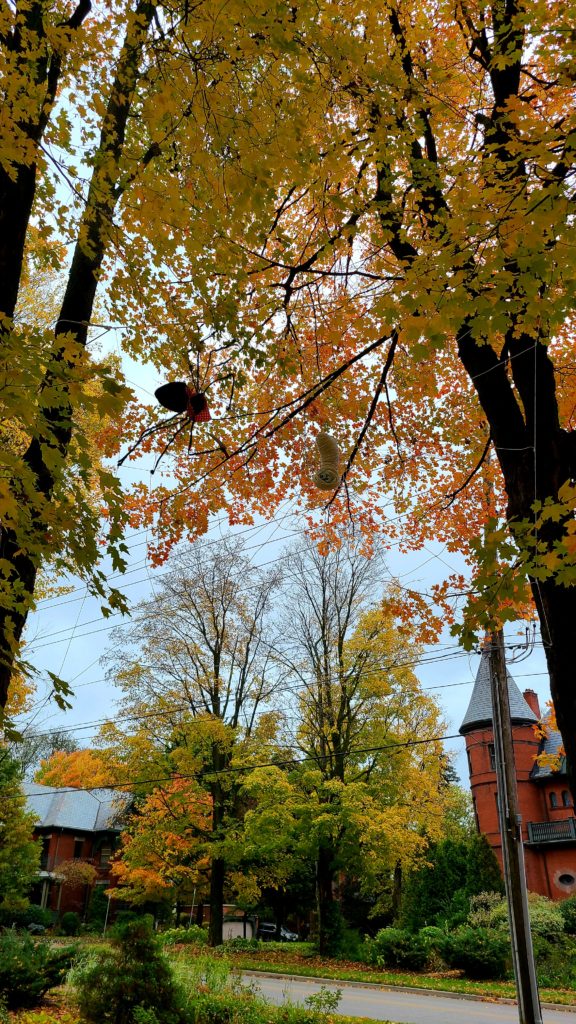
Location 5
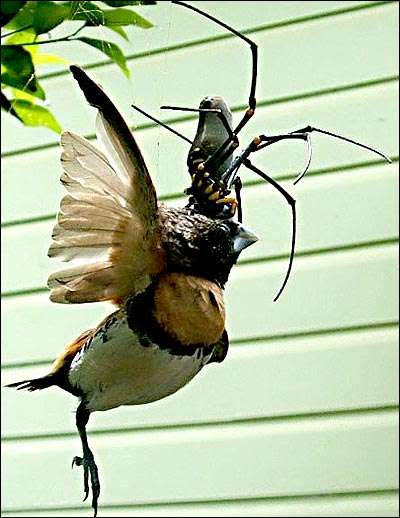
Giant Orb Weaver, by LorraX132
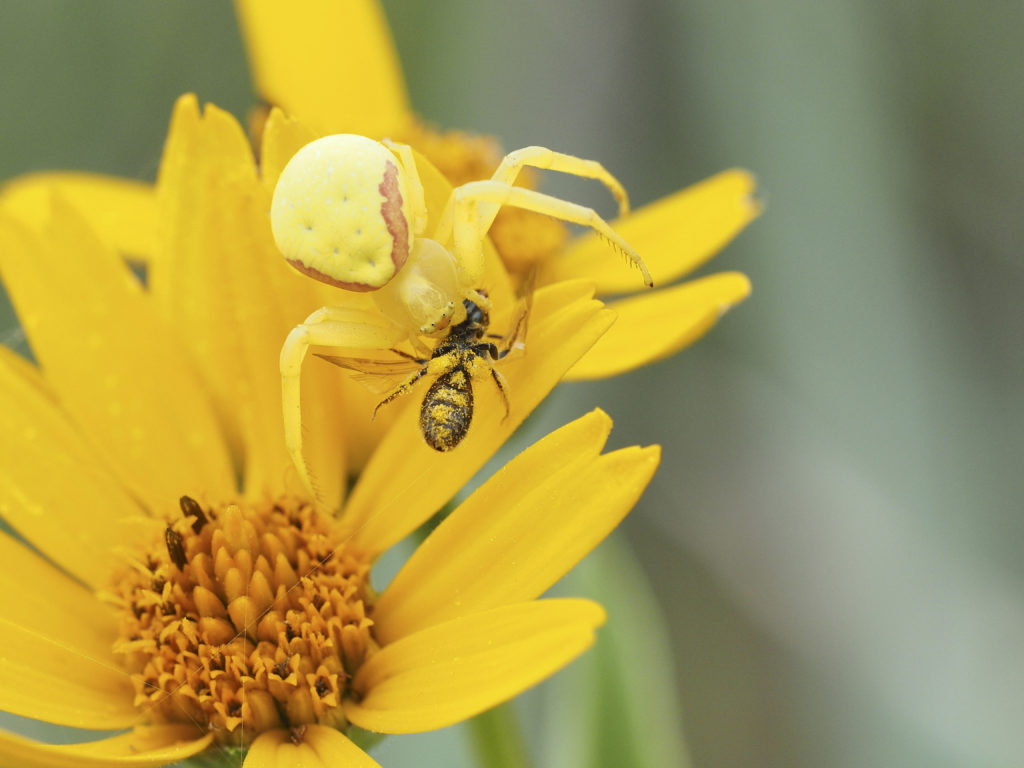
Goldenrod Crab Spider, by John Reaume
Fact: Spiders will eat as often as they can, up to 4 times a day. They can also survive for weeks without food. Even though they get the moisture from the food they eat they also need to drink water. Spiders are best known to eat insects but they also eat toads, small mammals and fish! New research has shown that spiders from 10 different families eat things like nectar, sap, leaves and pollen. Some even eat seeds from plants like weeds, shrubs, trees, grasses, ferns and orchids. Did you know that a few spiders are edible?! For instance, in New Caledonia, an island in the South Pacific, the Golden Orb-weaving spider is said to taste like pâté!
Location 6: Reading Spider
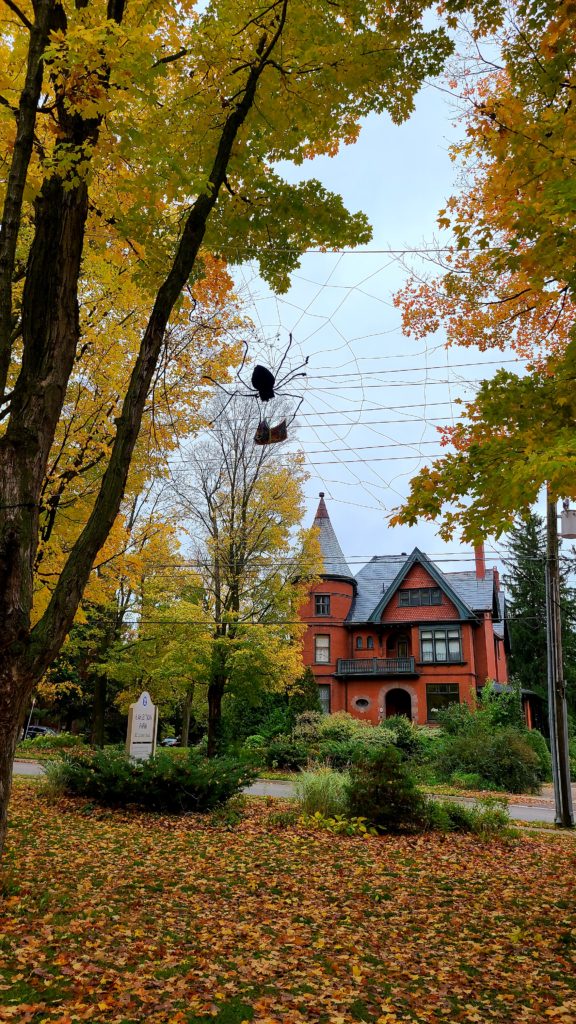
Location 6

Fringed Jumping Spider, by John Reaume
Fact: Can spiders read? no but they may be able to read your mind!
This is part of a theory of intelligence known as “extended cognition.” Scientists are discovering that some spiders could be smarter than some mammals and birds when it comes to foresight planning, and complex learning. Some spiders even have the capacity to be surprised. Amazing for a creature with such a tiny brain!
Location 7: Large Spider
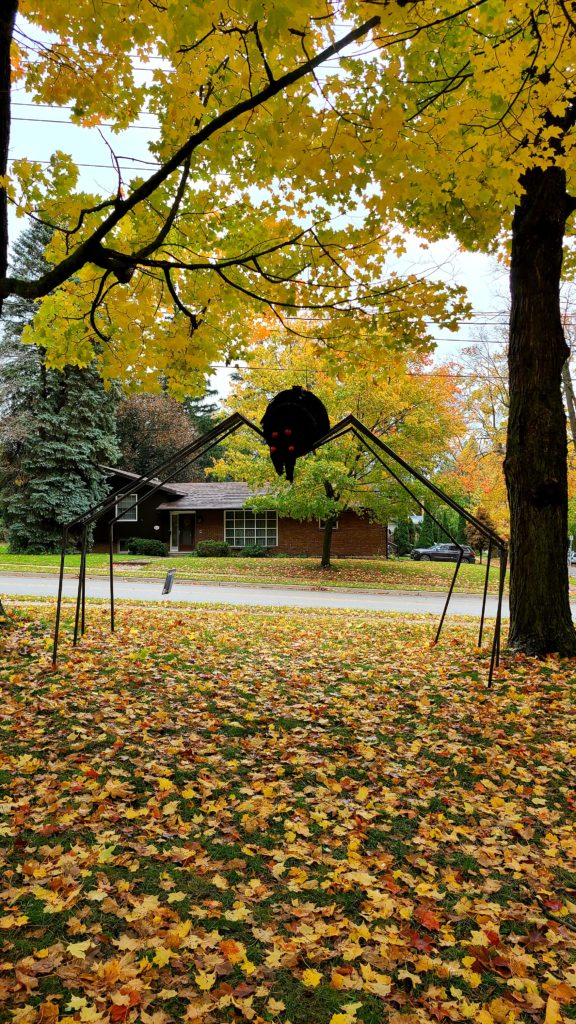
Location 7
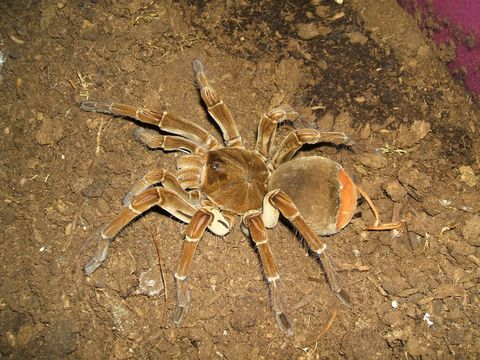
Goliath Bird Eater (public domain)
Fact: Goliath Bird-Eater is the largest spider in the world with a leg span of 28 cm (11 inches). That’s the size of a dinner plate! It is a type of tarantula discovered in 1967 in Venezuela and in northern South American rainforests. It does not make a web but lives in burrows under rocks or roots. The “Bird-Eater” sneaks up, pounces on its prey and injects its venom. The venom breaks down the soft tissues into a liquid so the spider can suck it up. Besides birds this spider is also known to eat snakes and wasps. The females live the longest, from 15 to 25 years. Males only live 3 to 6 years.
Location 8: Slingshot Spider
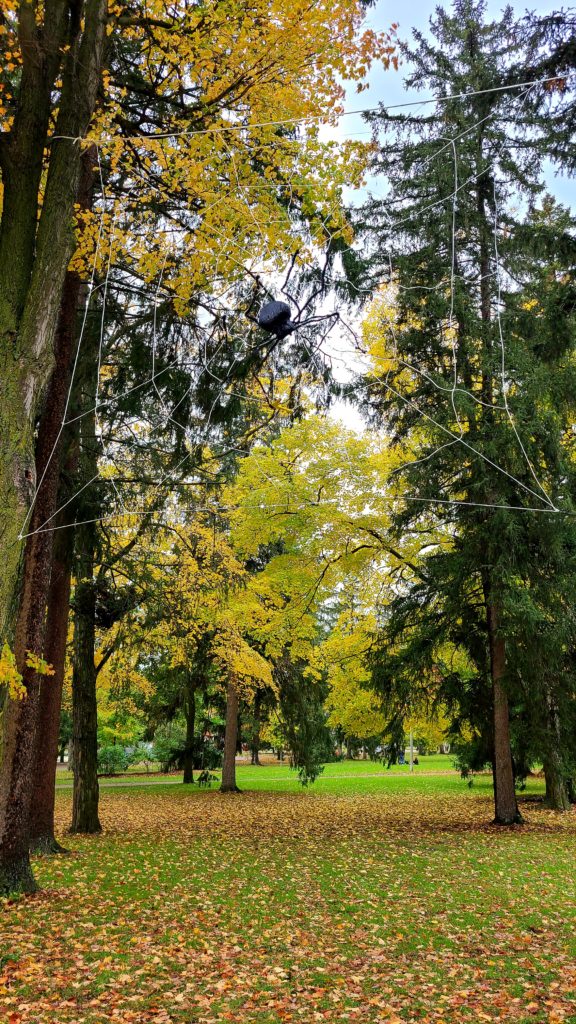
Location 8
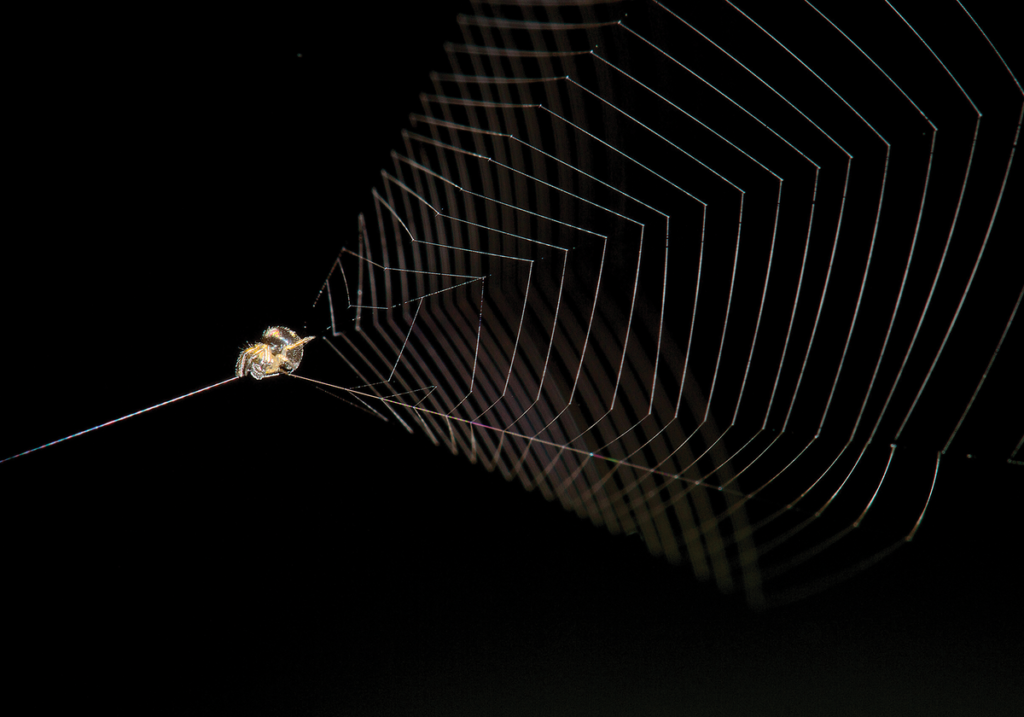
Slingshot Spider, by Lawrence E Reeves
Fact: Some spiders can use their webs like bows to catapult themselves and their webs at their prey. This may be the first documented example of a tool being used in this way by an animal! Only humans use this strategy for things like bows and catapults or slingshots.
Location 9: Knitting spider
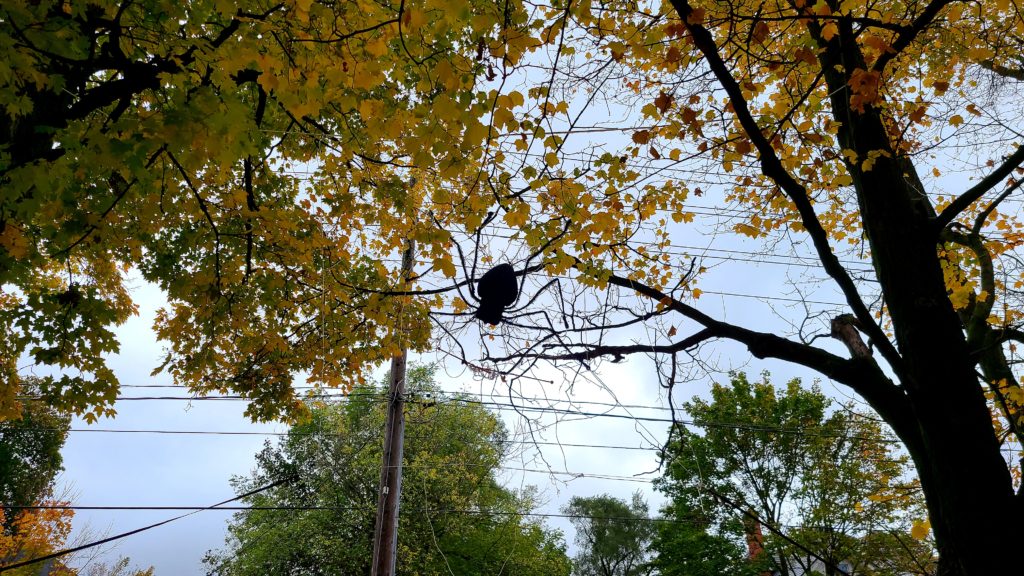
Location 9
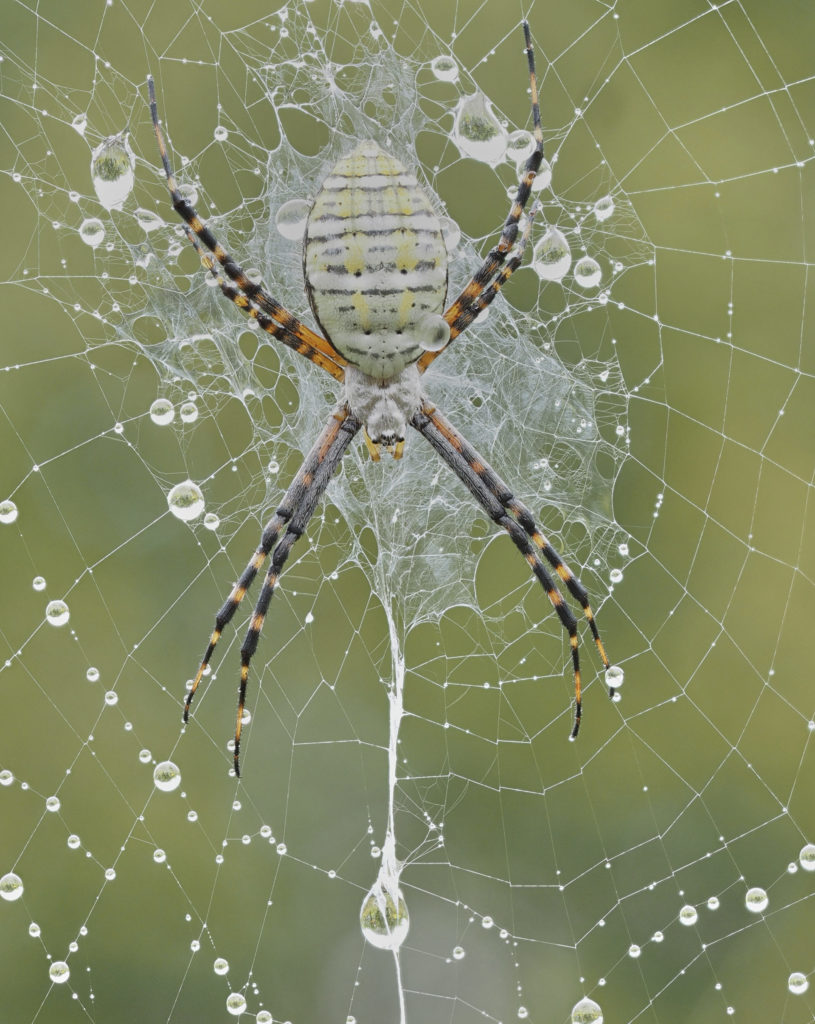
Banded Garden Spider, by John Reaume
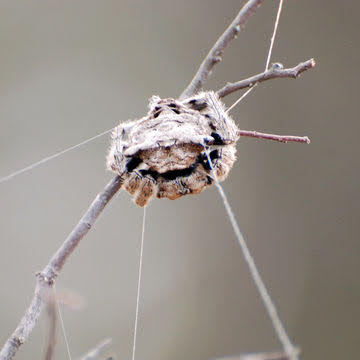
Darwin’s Bark Spider (public domain)
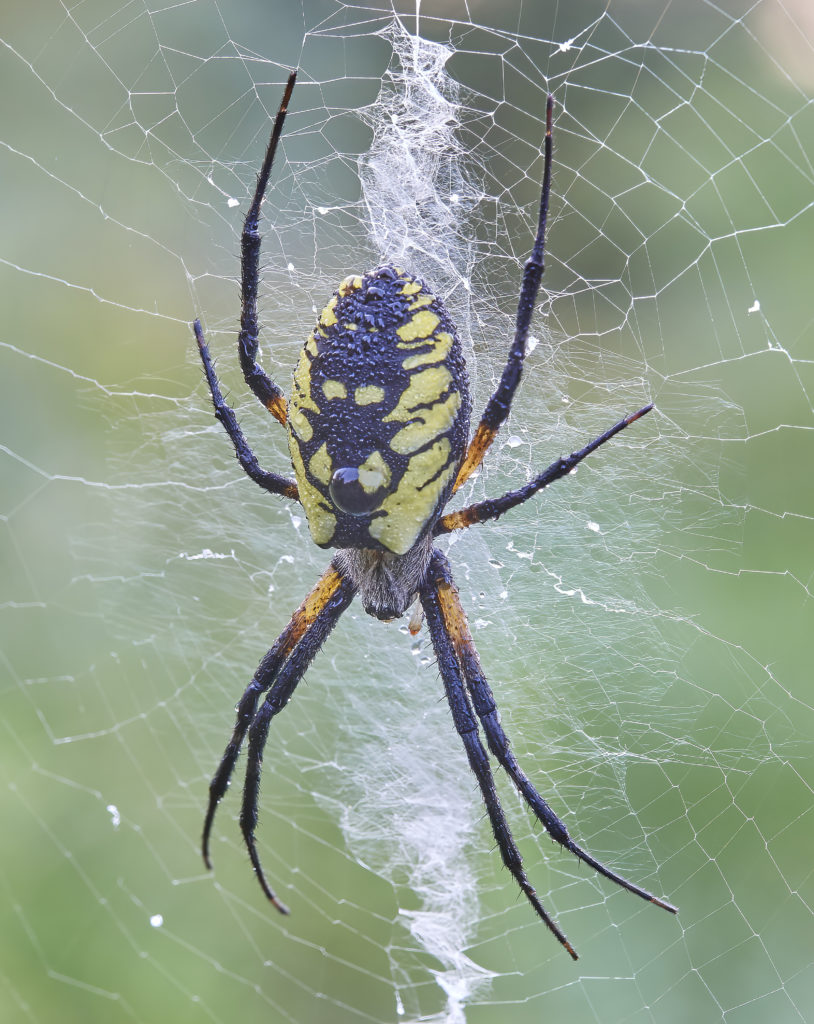
Yellow Garden Agriope, by John Reaume
Fact: The Darwin’s bark spider is amazing. It can shoot a support line of silk to attach its web that flies 30 feet into the air! In just a few hours these spiders can build webs up to 2.8 square metres (30 square feet), the largest webs in the world. Some spiders recycle their webs by looping them up and eating them. Three types of silk are used to make the webs, thicker strands for support, the sticky inside webs, and decorative strands called Stabilimenta. The Stablimenta is not for structure but could be for camouflage or for attracting prey.
Contributors




